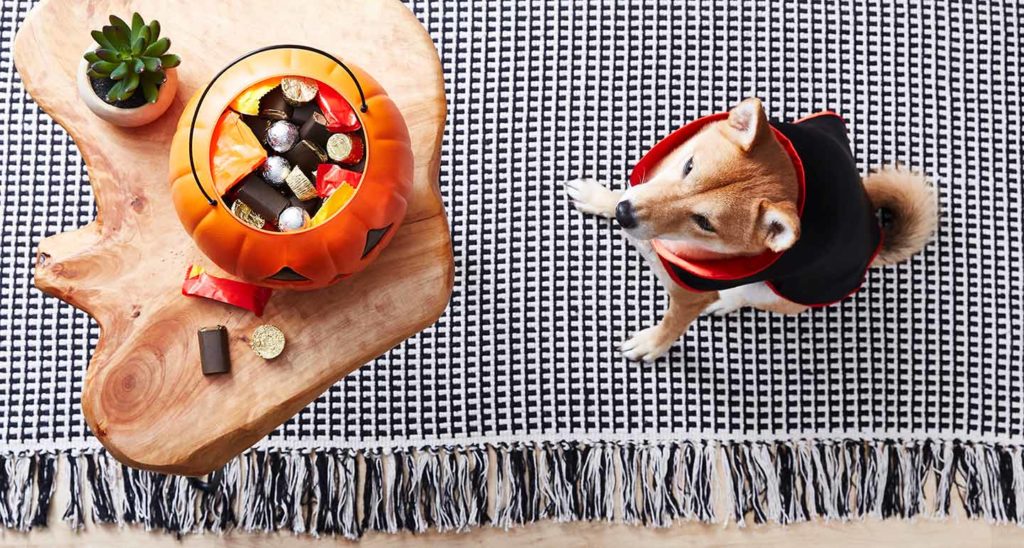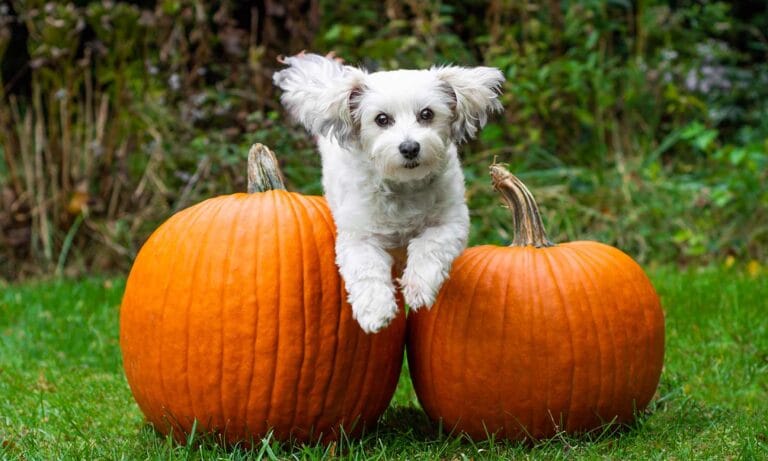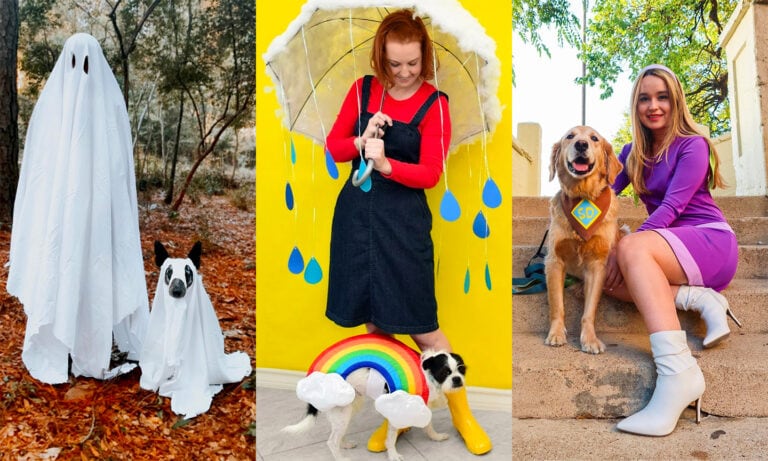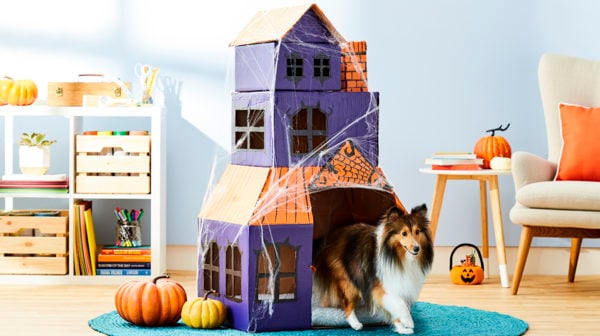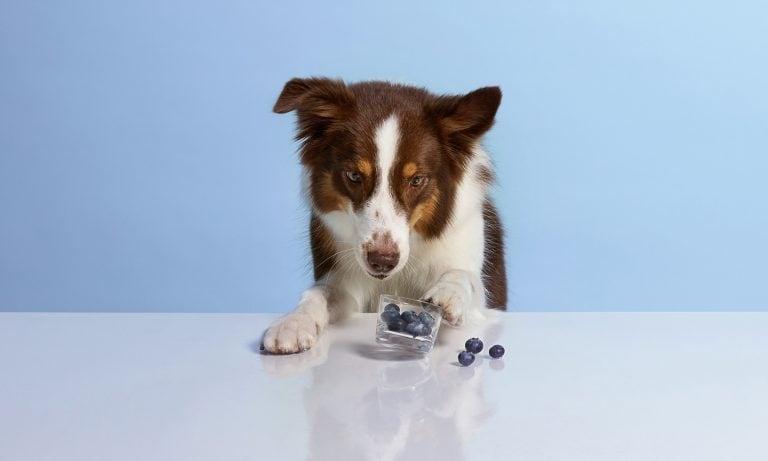Halloween means dressing up in costumes and eating lots of treats! Everyone’s favorite fall holiday is the perfect excuse to indulge in candy and other goodies. And if your pupper is known for begging for a bite of whatever you’re eating, you might find yourself wondering, “Hmmm ... can dogs eat candy corn?” Or simply “Can dogs eat candy at all?”
Don’t be tempted to share! Many popular Halloween goodies are not only unhealthy for your dog but can be truly dangerous.
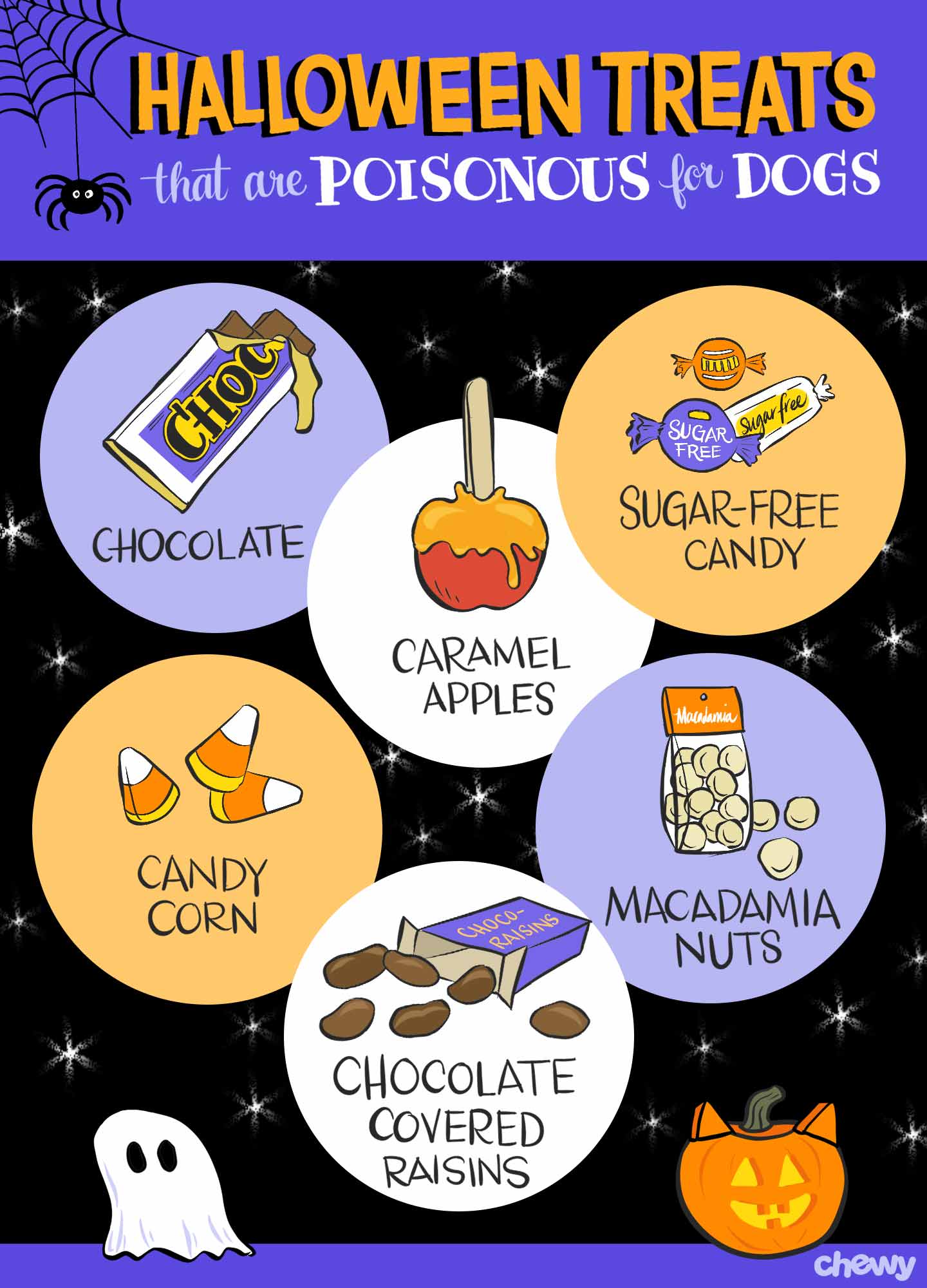
The trouble is that these sorts of foods can smell enticing to a dog. You might assume it’s the colorful, shiny, crinkly wrappers that attract your dog, but that probably isn’t the trigger for them to dive into that trick-or-treat bowl.
“It’s unlikely that the wrapper itself attracts the dog to eat the candy,” says Leonel Londoño, DVM, DACVECC, clinical assistant professor at the University of Florida College of Veterinary Medicine in Gainesville, Florida. “Dogs’ indiscriminate eating behaviors are primarily driven by their sense of smell.”
No matter the reason your pup ingests them, however, candy wrappers can cause big problems.
“One or two wrappers are easily passed through the GI tract. If ingested in large quantities, though, they may cause an obstruction in the GI tract,” Dr. Londoño says. “Although this is uncommon, it may need surgical removal and put the pet’s life in danger.”
And that’s just another reason to keep these six popular Halloween snacks far away from your dog.
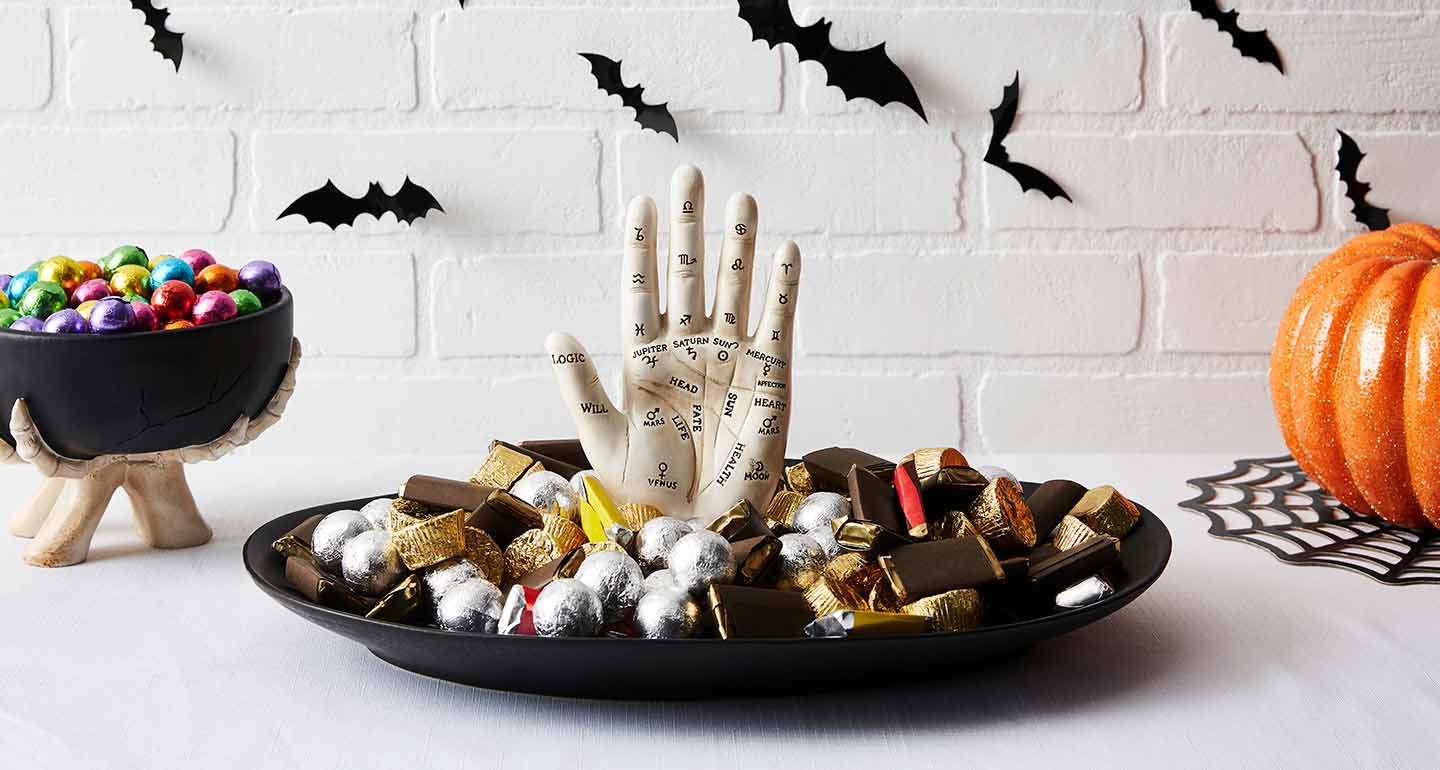
1
Chocolate of Any Kind
The dangerous component of chocolate is theobromine. Dogs have a harder time digesting it than we do. That, coupled with the fact that most dogs are smaller than humans, means theobromine can quickly build up to a toxic level in their bodies.
“The signs of toxicity are always dependent on the size of the dog and the amount of chocolate ingested,” Dr. Londoño explains.
He adds that the type of chocolate matters as well. Dark chocolate contains the most theobromine, white chocolate the least. Milk chocolate falls somewhere in the middle.
For example, if a 10-pound canine eats a typical 1.55-ounce milk chocolate bar, signs of toxicity include diarrhea and/or vomiting, maybe some tremors, Dr. Londoño explains.
“If this is the case, the pet should be evaluated by a vet, [who can] induce vomiting to prevent development of signs,” he says.
If a 20-pound dog eats the same chocolate bar, he’s very unlikely to develop signs, he continues. Regardless, “I always recommend pet parents contact a veterinarian, or pet poison control, if chocolate has been consumed,” Dr. Londoño says.
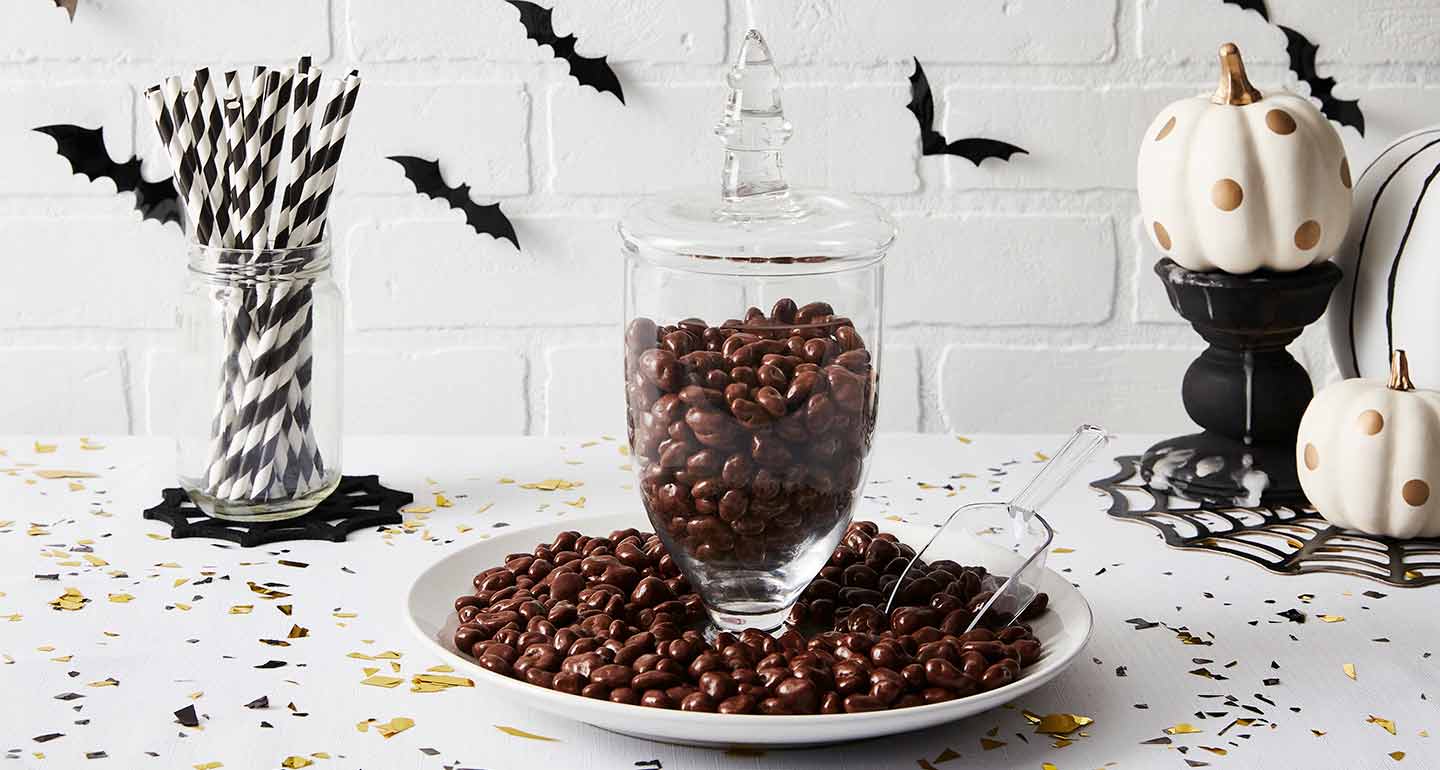
2
Chocolate-covered Raisins
This traditional Halloween treat is double trouble, says Kiko Bracker, DVM, DACVECC, co-director of emergency and critical care for MSPCA-Angell Animal Medical Center in Boston, Massachusetts. Not only is the chocolate problematic, but raisins (and grapes, for that matter) can be extremely toxic to dogs. Researchers have yet to pinpoint exactly what about them causes the reaction in some dogs, but kidney failure is not uncommon in dogs who have chowed down on raisins.
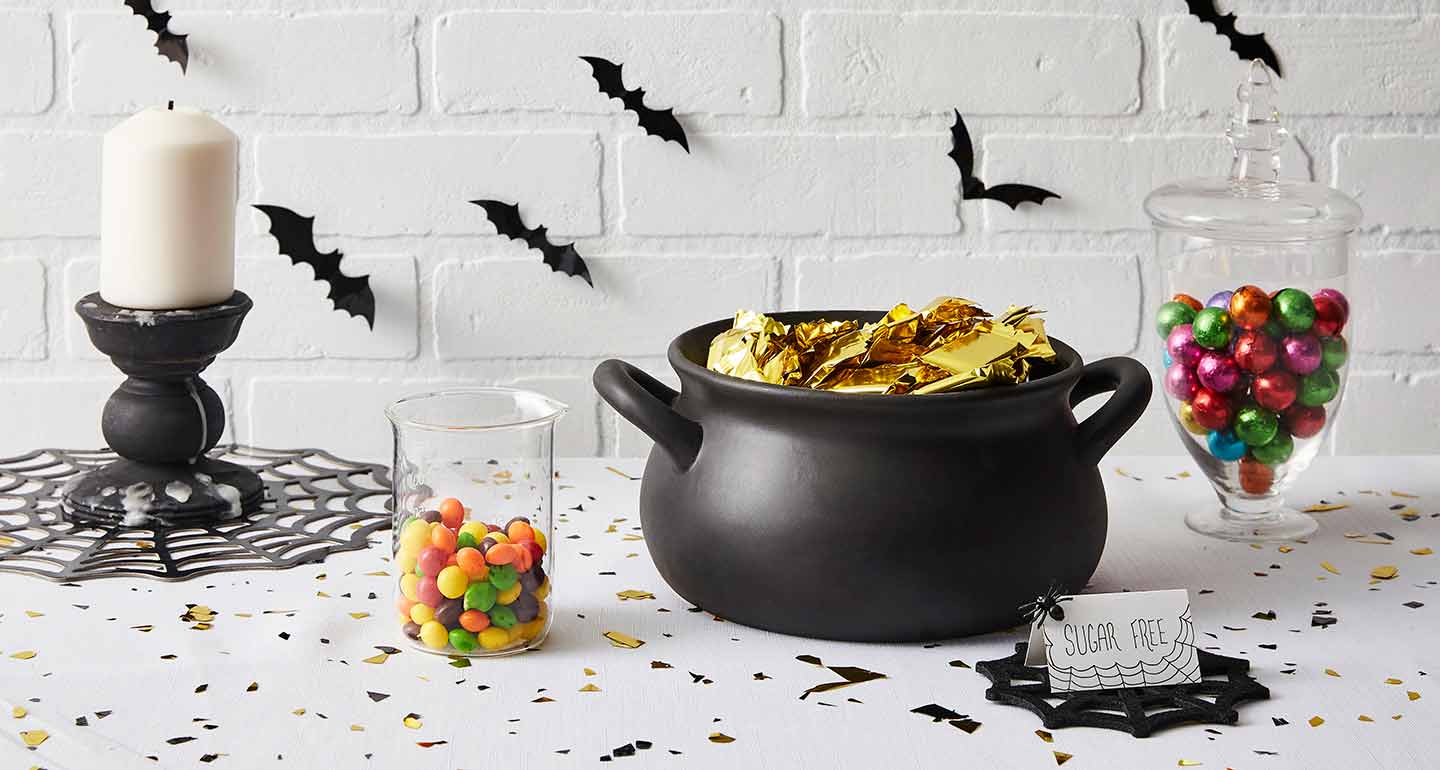
3
Sugar-free Candy
These may be good for your waistline, but xylitol, a pervasive sweetener in sugar-free candy, is toxic to dogs. Again, owing to the fact that dogs’ biological processes are different from humans, ingestion of this increasingly popular sugar alternative poses no problem for us, but can trigger life-threatening hypoglycemia in dogs, Dr. Bracker says.
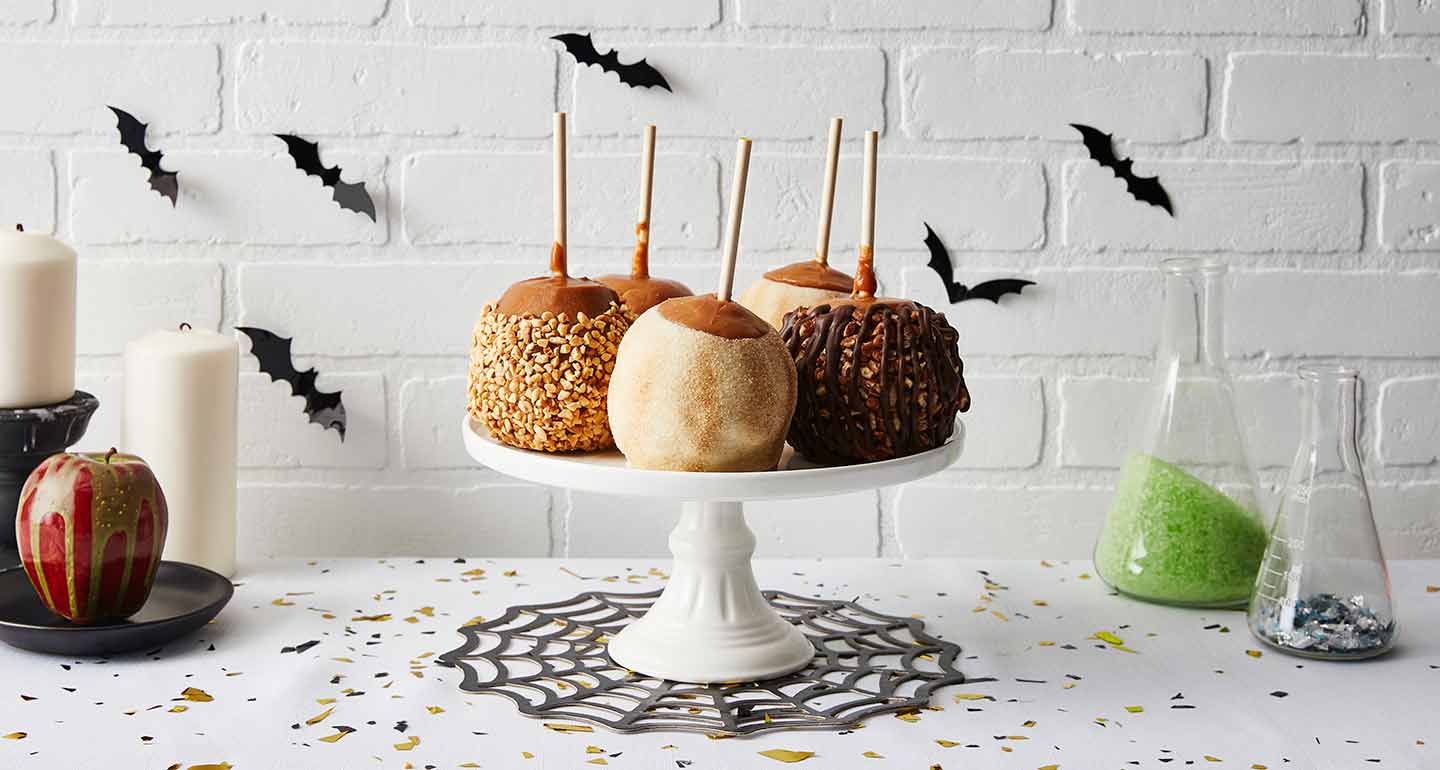
4
Caramel Apples
While the super-sweet caramel is a bad idea in itself, it’s the seeds inside of caramel or candy apples that can really make your dog ill, Dr. Bracker says. The seeds contain a form of cyanide.

5
Candy Corn
In case you were still wondering, the answer to “Can dogs eat candy corn?” is a resounding “Absolutely not!”
“Signs associated with ingestion of large amounts of sucrose and glucose are going to be gastrointestinal,” Dr. Londoño says. “With severe diarrhea and vomiting, signs of dehydration and abdominal pain may also develop, requiring veterinarian attention.”
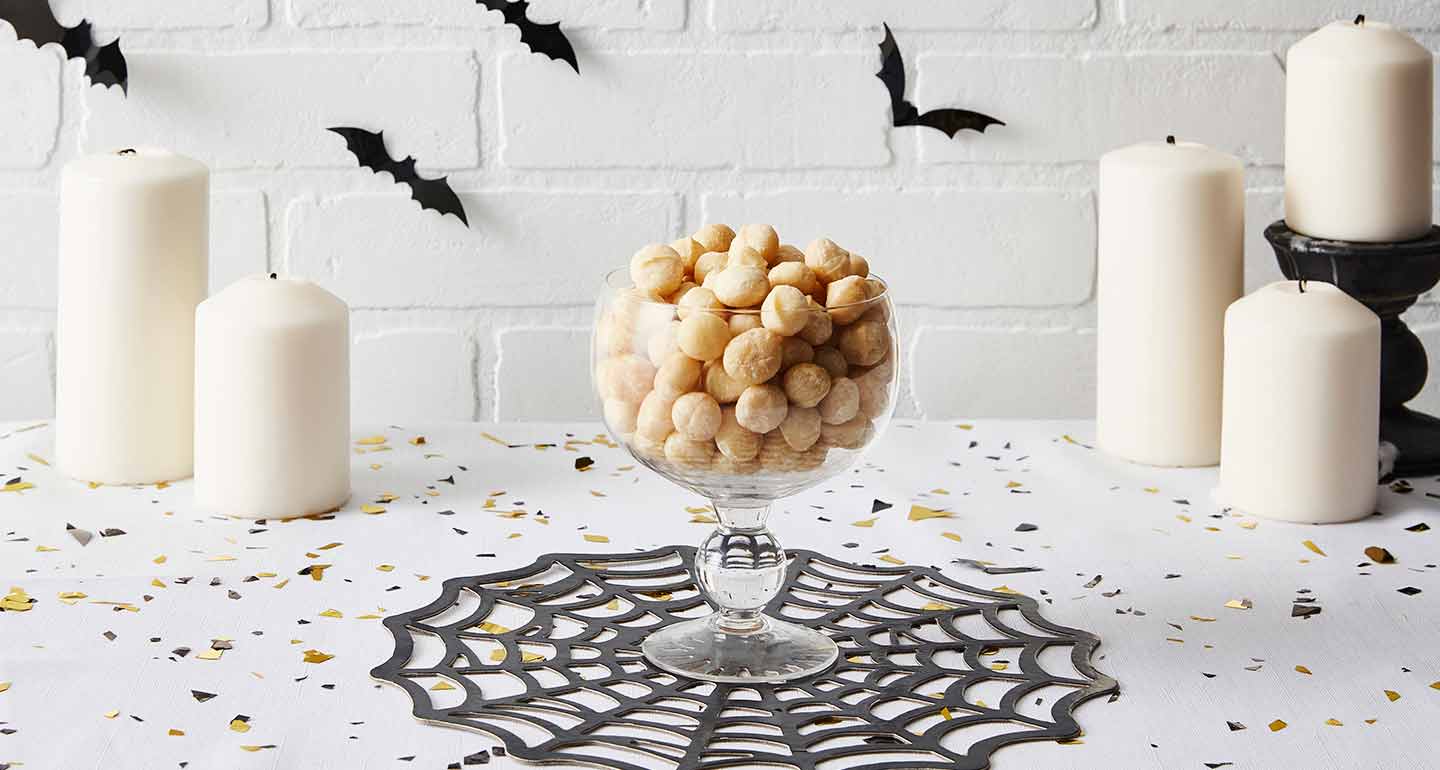
6
Macadamia Nuts
Nuts in general, due to their high-fat content, can upset a dog’s digestion. But macadamia nuts specifically are highly toxic to dogs, Dr. Bracker says. As is the case with raisins, it is unclear exactly why. But eating even a small amount can cause weakness, tremors and lethargy in dogs. So, while nuts may be a perfectly healthy snack for you, keep the bowl well out of your dog’s reach.
Dogs who ingest any of these six dangerous fall treats may exhibit symptoms such as nausea, listlessness, diarrhea, appetite loss or exhaustion, according to Dr. Bracker.
“If pet owners suspect their pets may have eaten any of these foods, then they should rush their pet to the veterinarian straight away,” he says.
Even though you now know these six popular Halloween treats are completely off limits to your pet, you may still be wondering “So when can dogs eat candy or a special treat?” When it’s a DIY dog treat made just for him, like this homemade peanut butter cup for dogs. Leave the human goodies to the humans.
Read more:
Share:
